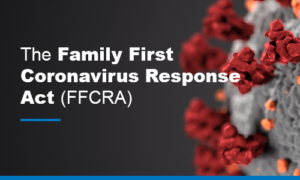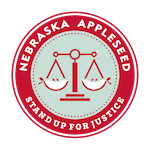Paid leave available for some working parents with children out of school or childcare due to COVID-19
 The Families First Coronavirus Response Act (FFCRA) was the first aid package passed by Congress in response to the COVID-19 pandemic. The FFCRA contains paid leave provisions related to the pandemic. The provision that has gotten the most attention provides expanded paid sick leave for employees who are unable to work because the employee is quarantined and/or experiencing COVID-19 symptoms or is caring for a child that is quarantined.
The Families First Coronavirus Response Act (FFCRA) was the first aid package passed by Congress in response to the COVID-19 pandemic. The FFCRA contains paid leave provisions related to the pandemic. The provision that has gotten the most attention provides expanded paid sick leave for employees who are unable to work because the employee is quarantined and/or experiencing COVID-19 symptoms or is caring for a child that is quarantined.
The FFCRA also includes a provision that helps working parents.
The FFCRA permits qualified employees to take up to 12 weeks of paid leave at two-thirds of their regular rate of pay for employees who are unable to work due to a need to care for a child whose school or child care provider is closed or unavailable for reasons due to COVID-19.
Working families are under intense stress right now, in so many ways.
And there is additional stress right now with the start of a new school year in which some school districts in the state are – or likely will be in the near future – operating fully or partially with remote learning. This leaves many families trying to balance work with “homeschooling” – and other children unsupervised at home, trying to navigate online learning by themselves, while their parents have to leave the home to work. Beyond the individual stress, on a systemic level, schools have not had the time or resources necessary to create systems that will effectively serve all kids. As a result, this lack of investment is certain to exacerbate the already existing achievement gap among children of color.
This provision of the FFCRA won’t solve all of those challenges by any means, which is why Appleseed is and will continue to push a broader agenda of reforms related to the pandemic.
But we want to make sure you know about this resource that might be able to help you and your friends or loved ones, or families you work and interact with in the community.
Here is more information about the provision, including qualifications:
- It only applies to certain public employers and private employers with fewer than 500 employees.
- The employee has to have been employed for at least 30 calendar days before they can take the leave.
- Certain “health care providers” may be excluded by their employer from taking this leave.
- If the employer has fewer than 50 employees, the employer can apply for an exemption to not have to provide the leave if the leave could “jeopardize the viability” of the business.
- Employees are entitled to pay at ⅔ of their regular rate or ⅔ of the applicable minimum wage, whichever is higher, up to $200 per day and $12,000 over the 12-week period.
- Part-time employees are eligible for leave for the number of hours that the employee is normally scheduled to work over that period.
- Employers can permit employees to take “intermittent” leave (e.g., hour-by-hour) or the full 12 weeks all at once.
- The employer receives tax credits from the federal government to help them pay for this leave.
- If you receive health insurance coverage through your employer, your insurance should continue during the leave.
- This leave option is set to expire on December 31, 2020.
If you qualify, you have a right to this leave. A good first step is to talk to your human resources department or your supervisor about your options.
For more information:
U.S. Department of Labor resources
- Family First Coronavirus Response Act: Employee Paid Leave Rights
- Family First Coronavirus Response Act: Questions and Answers
Omaha Women’s Fund

